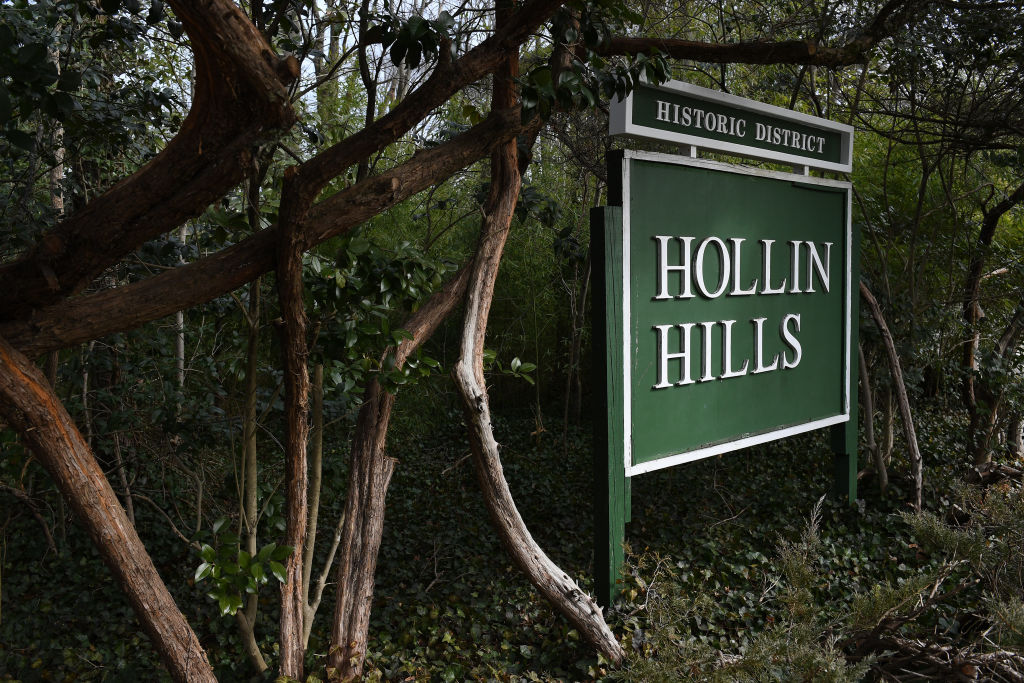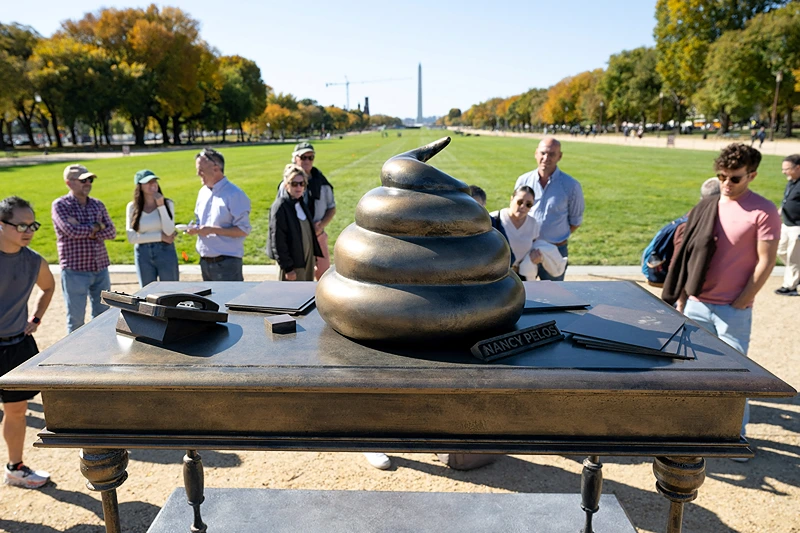When Suburbia Was Weird
A modernist enclave in the nation’s capital celebrates its 75th anniversary. The post When Suburbia Was Weird appeared first on The American Conservative.

When Suburbia Was Weird
A modernist enclave in the nation’s capital celebrates its 75th anniversary.

Geography, not design, is the main determinant of housing prices in the Washington, DC, suburbs. A garish McMansion in the leafy inner ring will fetch far more than a charming bungalow out by Harper’s Ferry. If suburban Northern Virginia has an architectural signifier, it’s a faux-colonial style that vaguely evokes the region’s fading Southern character. Old Town Alexandria still has its historic brick townhouses and cobblestone streets, although a monument to Confederate war dead was quietly removed in 2020.
Amid Northern Virginia’s carefully-manicured lawns and oversized garages, one residential neighborhood stands apart. Designed by a student of Frank Lloyd Wright, Hollin Hills was founded as a modernist enclave for artists, free spirits, and various other oddballs who didn’t quite fit in a typical postwar suburb. As the community celebrates its 75th anniversary, it has slowly transformed from bohemian hideaway to highly sought-after neighborhood in one of the most affluent metro areas in the country.
Modernist architecture is often associated with gigantism, but Hollin Hills was designed with more modest aims in mind. Individual homes are almost hidden from view by heavy foliage. Large, angular windows, perhaps the neighborhood’s defining feature, are offset by spare wooden frames and ivy-covered brick walls. Steel and concrete, two staples of modernist architecture, are present but rarely visible. Several typically suburban features are absent. If you buy a home in Hollin Hills, you are forbidden (at least in theory) from building a garage or a fence.
Hollin Hills was designed by Charles Goodman, one of Wright’s architectural proteges, who opted to build the neighborhood around its hilly, heavily wooded terrain instead of reshaping the landscape. The marriage of environment and design recalls Wright’s Fallingwater, the iconic Pennsylvania home built over a waterfall.
If Hollin Hills has a fictional analogue, it can be found in The Fountainhead, another product of midcentury counterculture. In Ayn Rand’s libertarian parable, the iconoclastic architect Howard Roark wins fame and notoriety for his uncompromising modernist design philosophy. One of his projects, Monadnock Valley, is a resort made up of individual houses built into a hilly, wooded landscape for vacationers of modest means. “The people who came,” Rand wrote, “were a strange mixture: society men and women who could have afforded more fashionable resorts, young writers and unknown artists, engineers and newspapermen and factory workers.”
Hollin Hills was never a resort, but Rand’s description of Monadnock Valley is otherwise a fair depiction of the neighborhood and its first generation of residents. Coincidentally, the character of Roark was inspired by the career of Goodman’s mentor, Frank Lloyd Wright.
Few of the earliest Hollin Hillers shared Rand’s politics, but they would have identified with her unorthodox lifestyle and outsider status in a postwar era often characterized by political and cultural conformity. Buying a newly built Hollin Hills home in the 1950s invited raised eyebrows and arch comments from your more conventional neighbors.
The original Hollin Hillers were an odd bunch. A community survey from 1956 reveals that the number of residents who called themselves Republicans was roughly equal to the number who described their politics as “other” (which likely signified far-left sympathies, as the remaining three quarters of the neighborhood were Democrats). City University of New York architecture professor Michael Sorkin, who grew up in Hollin Hills, has said that the neighborhood was “decidedly pinkish from the first.”
At a time when less than 10 percent of Americans were college educated, over a third of the neighborhood’s residents had at least a bachelor’s degree. The religious affiliations of that first generation also stand out. One fifth of the neighborhood was Jewish and another fifth Unitarian.
Over the years, the neighborhood attracted a few notable figures. Acclaimed war reporter Bernard Fall, author of Street Without Joy and prescient critic of the United States’ involvement in Vietnam, lived in Hollin Hills in the 1950s. Two decades later, singer Roberta Flack invited Gil Scott-Heron to stay at her neighborhood home. It is amusing to think of the poet behind “Whitey on the Moon” navigating one of the palest zip codes in America
In some ways, the neighborhood’s current residents are lineal descendants of the founding generation. By 1980, over half of Hollin Hillers had a college degree, a number that is surely much higher now. A not-very-scientific survey of neighborhood yard signs suggests that upscale liberalism is still the default political outlook. A Washington Post article from 2019 noted the popularity of signs proclaiming, “No matter where you are from, we’re glad you are our neighbor.” Despite faddish enthusiasm for mixed-use developments and walkable urbanism, affluent liberals still like space and privacy in leafy residential neighborhoods.
In other respects, however, Hollin Hills’ essential character has changed dramatically. The local Unitarian Church, once a center of civic life, has steadily lost ground. The neighborhood Civic Association no longer commands near-universal membership among residents. By the 1970s, homeowners were landscaping and building in ways that clashed with the neighborhood’s original character, prompting the creation of an expensive and time consuming design review process for all proposed additions.
But the biggest change is economic. Like Rand’s Monadnock Valley, Hollin Hills was originally marketed as a unique combination of affordable “country living” and midcentury futurism. Early sales brochures touted “homes in tomorrow’s vernacular for everyone’s pocketbook.” The original starting price for a house was $10,000, or approximately $130,000 today.
This sales pitch reflected broader postwar interest in stylish but inexpensive suburban living. Wright designed a series of “Usonian” (his preferred term for American) homes that married local materials, modern design, and affordability. After finishing Hollin Hills, Goodman was commissioned by Alcoa to build one “care-free home” in the mid-century modern style for every state in the union. The project was meant to show that Goodman’s design philosophy could be adapted to suburban living.
Goodman never completed the Alcoa project. The “care-free” homes he did build came in over budget and are now design curiosities instead of architectural templates. Wright’s Usonian homes have been eclipsed in the public consciousness by the likes of the Guggenheim Museum and Fallingwater. Impressive designs, to be sure, but distant from the cares of your typical family.
Meanwhile, the DC metro area’s relentless expansion transformed Hollin Hills and the surrounding area from “semi-rural” to thoroughly suburban. The same economic forces driving DC’s outward thrust, combined with the scarcity of mid century modern homes, have pushed average home prices in the neighborhood close to a million dollars. In 2015, Roberta Flack’s former residence was listed for nearly $900,000. The asking price would surely be much higher today.
Many of Hollin Hills’ signature features have contributed to its current exclusivity. Big windows drive up heating costs. Flat roofs are expensive to maintain. Every home is built on a concrete foundation, which makes renovations costly. More and more residents outsource care of their hilly, densely-treed properties to professional landscapers.
Efforts to preserve Hollin Hills’ unique design sensibility have also made the neighborhood pricier for prospective buyers. Young families need space, but any proposed addition must go through a lengthy design review process to make sure it conforms to the Hollin Hills aesthetic. In 2013, the neighborhood was listed in the National Register of Historic Places, adding another bureaucratic hurdle for residents looking to build an extra bedroom.
Sorkin, who grew up next door to my parents’ home, vividly remembers a childhood spent running through the woods and hills of a neighborhood without boundaries. “It was . . . completely contrary to the ethos of the place for yards to be fenced and children were authorized to cut across lots,” he wrote in 2011 for Architecture Today. This sylvan environment surely inspired a great deal of creative output. One oft-mentioned bit of local lore is that the production designer for the midcentury drama Mad Men grew up in Hollin Hills.
There are fewer children running through the woods these days. In 2012, a local couple won The Washington Post’s Mad Men contest for their carefully curated collection of midcentury home decor. Every other year, the neighborhood hosts a House and Garden Tour to show off its tastefully appointed homes to visitors. A community built for middle class families is now accessible mainly via guided tours (or Instagram).
Maybe midcentury modernism, with its massive windows, angular roofs, and expensive upkeep, was always a poor fit for affordable suburban living. But it is striking that a distinctly American vision of middle class futurism has ossified into expensive nostalgia. The next Hollin Hills won’t be built in the DC suburbs. Maybe it’s being built right now on the outskirts of Atlanta or Raleigh or Houston. Those houses will become homes for young families looking for safe, reasonably-priced neighborhoods to raise their kids. But the ambition and vision to build something affordable and beautiful, like the postwar society that gave life to midcentury modernism, no longer exists.
The post When Suburbia Was Weird appeared first on The American Conservative.
What's Your Reaction?
















